#Afghan Rug London
Text


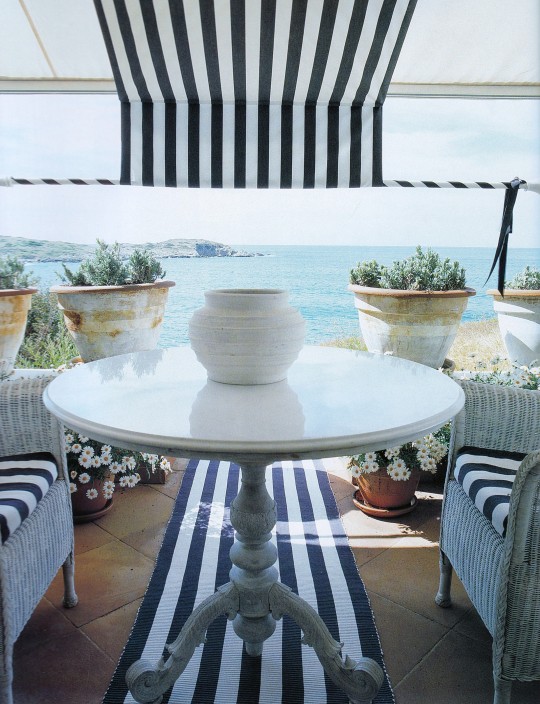
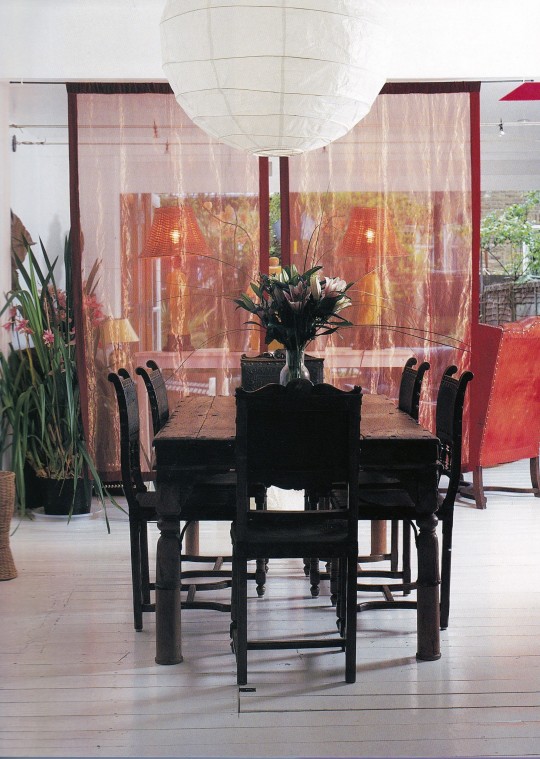
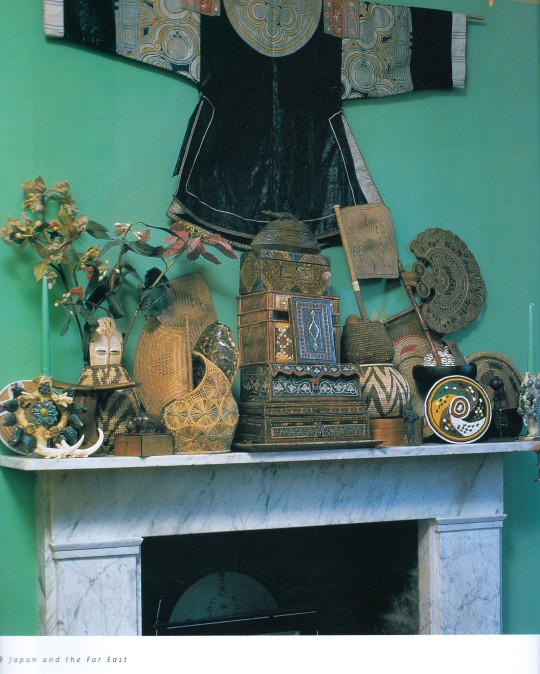
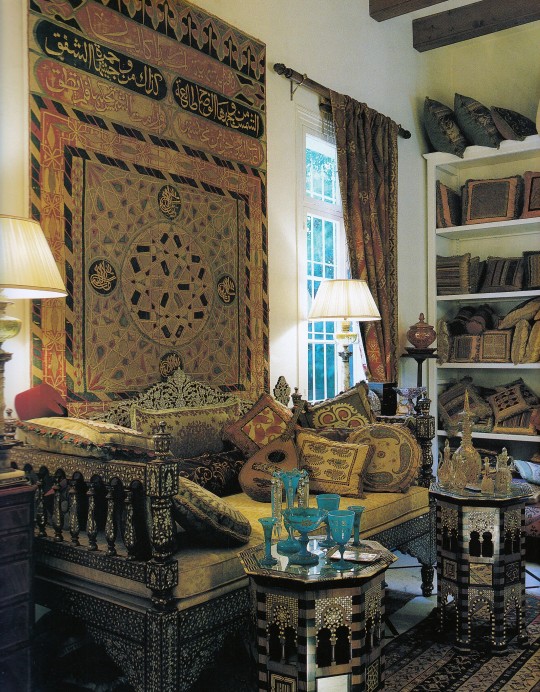
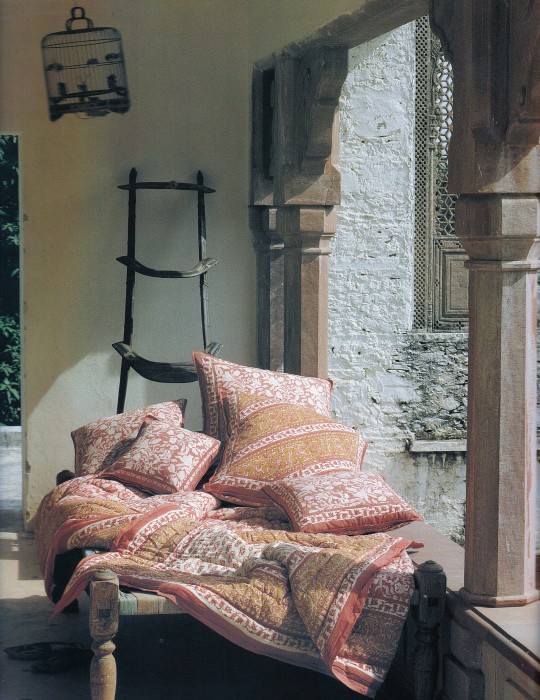


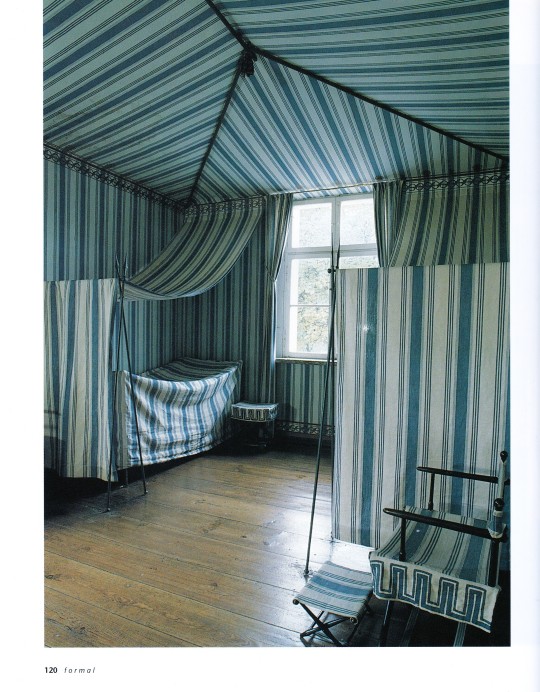


Living with Textiles
Elaine Louie
Mitchell Beazley, London 2001, 144 pages, over 140 colour photos, 24x29cm, ISBN 9781840003871
euro 30,00
email if you want to buy [email protected]
Chinese silks, Egyptian linens, Afghan rugs: every culture recognizes the sensuality and functionality of textiles. Yet, too often their striking contribution to the modern interior is overlooked. Over 140 eye-opening color photos reveal what a wonderful difference they make, draping the walls, covering a bed, upholstering the furniture, warming the floors, softening the lines. Display a small hooked rug as a piece of art, or turn an obi (a kimono sash) into the perfect table runner--you're limited only by your imagination. Every page features a new application for textiles in the home, from hangings to room dividers, as well as information on particular fashions and period effects, including Indian, Japanese, African, French, and English Formal. It's inspiration and information for bringing unique style to your environment.
17/07/23
orders to: [email protected]
ordini a: [email protected]
twitter:@fashionbooksmi
instagram: fashionbooksmilano
designbooksmilano
tumblr: fashionbooksmilano
designbooksmilano
#Living with textiles#chinese silks#egyptian linens#textiles in the home#afghan rugs#indian textiles#japanese textiles#african textiles#french extiles#english textiles#designbooksmilano#fashionbooksmilano
8 notes
·
View notes
Link

#Rug Cleaning London#Rug Repairs London#Persian Rug London#Afghan Rug London#Large Wool Rugs Nottingham
0 notes
Photo

7 middle eastern female designers and their uplifting product designs
as we have summarized 6 young and talented male designers from dubai and lebanon, let's take a further look into seven female designers from the middle east and their uplifting products that have successfully inspired and contributed to major changes in middle eastern design. cloak and troll loveseat by anastasya nystenanastasia nysten is a lebanese designer born in ottawa and raised in finland, france, and lebanon. she graduated with masters of industrial design from alba while working at karen chekerdjan design studio. she introduced the adaptable cloak, which name refers to clothing piece used for travelling worn over the shoulder to protect human body from external environment, and the fluffy-look troll loveseat, which anatomy aims to naturally yields to the seater's posture, offering endless comfort supported by a wooden structure that acts as the skeleton for loosely stacked pillows. in 2015, nysten and her studio experimented with objects and interiors that retell stories of different cultures and have been exposed throughout beirut, paris, milan, and ksa. the shows include the house of today biennial show jungle protocol, spazio rossana orlandi in milan, athr gallery in jeddah, and has received talent award at the beirut design fair in 2017 talent award at maison & objet september 2018 edition. photo credits: anastasya nysten oyster lamp by carla bazcarla baz is a french-lebanese lighting designer known for her ability to infuse a whimsical and elegant touch to traditional craftsmanship. she established her own design studio in beirut after graduated from interior architecture at esag penninghen in paris and product design for the luxury industry at the university of art and design lausanne (ecal), and has earned astonishing experience by working with renowned designers, including vivienne westwood and zaha hadid during her masters in london. among her popular and classy lighting products is the wall-mounted oyster lamp, which name derived from its shape that resembles an oyster with a small pearl embedded on the body. the lamp is series of sculptural lighting pieces developed in 2016 and is subjected to baz's exploration of customizable and adaptable designs to different functionalities and scales wrapped in 3 different available sizes and eccentric, bold colors. photo credits: carla baz carpet weaving by fbmithe fatima bint mohamed bin zayed initiative (fbmi) is a social enterprise established to initiate a change in the stark realities of afghanistan's women and children. the initiative has hired over 6000 afghan artisans, of which 70% of them are women; half of these women are widows. one of their program initiatives includes carpet weaving, which not only aims to empower the 4000 women they hired but also to preserve the ancient art of hand-knotted carpet making in the region. every stage of the ancient craft of carpet making, from shearing the sheep, to spinning the wool, to hand-knotting the design, to trimming the pile of the finished rug, is carried out by hand. as carpet weaving is part of the soul of afghanistan's intangible heritage across generations, these afghan women are paid a good wage which in turn empowers them to help themselves. it is a truly sustainable initiative and a highly successful social enterprise. read full story https://bit.ly/3aHVcKK
3 notes
·
View notes
Text
Day 365. The End.
I’ve decided to make cheesecake as a send-off to this blog. I cannot think of any good reason why cheesecake should not be the cake-of-celebration for having reached my goal of creating something delicious every day for one year. Cheesecake was my sister’s favorite, and she died a year ago in March, bypassing a global pandemic by one week. Every memory I have of the countless celebrations in her home include a cheesecake. Cheesecake was my father’s favorite. He grew up on New York-style cheesecake, and he made sure my mother had a Lindy’s Cheesecake recipe when they married in 1963. My mother made good on her promise to feed him with love, and cheesecake. My mother’s birthday was in March. She taught me how to make a cheesecake using her large, ceramic mixing bowl in our kitchen in Ohio. I cannot think of cheesecake without thinking of my mother. The pandemic started in March and brought us to another March. All roads lead us to cheesecake.

One week into the pandemic and toilet-paper humor, I decided I would use the next 365 days to cook and bake, and write about it. Aside from a few months when yeast was sparse, we lacked for nothing, including toilet paper. Unbelievably, and faster than I thought one year could pass, I have reached the end of my goal. I needed a thing to grab on to at the start of this pandemic, something separate from teaching. True, I was tired at the end of some days and faced this goal reluctantly. Or worse, there was a day when I’d already gone to bed. I closed my eyes then moments later remembered my blog. But I dragged myself to the couch and sitting position anyway. Not long ago, after watching a family movie, it was close to midnight and I said to my kids, “My blog!” Ethan sat nearby. “Quick mom! It’s ten minutes to midnight. You can do it!” I shared some pictures and words of the food I’d made that day and at 11:57, clicked on “Post.” Mostly I felt like I was writing into a black void, then unexpectedly a friend would email or text indicating they were reading these posts. I was glad someone was reading, but I guess that wasn’t the point. All along I knew I was doing this for me, to brighten my days and bring on a spot of joy.
The cooking, baking, recipe searches, taking pictures, and writing helped to define my life this year. I’ve thought a lot about why the act of cooking and baking is important to me, too. Once, many years ago, a couple of friends were on a road trip and they stopped at our home for dinner. That night I happened to be making pasta with cauliflower and tomato sauce, garlic and cheddar cheese, a pretty standard week-night meal in our house. They dug into that food like it was their last drop of sustenance on the long journey ahead, even though they were only traveling by minivan from one state to the next. They exclaimed and wanted the recipe and so thoroughly enjoyed that simple fare, it seemed as if it had been many moons since they’d eaten a homemade meal. Making dinner that night, I would never have anticipated their reaction to it.
I think about the times I’ve been fed by others. A long time ago, for one year, I worked in a school in Highwood, Illinois, an old town with a large Italian population. The secretary of my school was a short, slight-framed, older Italian woman with whom I had a special connection. She had worked at the school for maybe her entire career. I complained to Vera once about the reading curriculum in first grade that didn’t use real children’s literature. Same old story. I hinted that I was going to talk to the principal about it. This was my first teaching job and she warned me against that. I’ll never forget her words. “You don’t talk about books to someone who doesn’t read.” She came into my room once as I was reading a story aloud to my students, and she paused to listen. Later she told me I was “the real deal.” Ah, to be seen by another person. Even if only briefly.
Vera and her husband were making pasta dumplings, she told me one day, and she’d like to have me over for lunch. When I went across the street and knocked on their side door, I entered their kitchen where they were filling dumplings with cheese and meat, trays of fresh pasta, dough, and flour spread out on the small kitchen table. The scene was intimate and homey, as traditional as any holy ritual, and I was invited to pull up a chair. It was the first time I’d eaten homemade pasta and I remember it still.
I have put a permanent place card next to my heart of the people who have fed me in my life. Homemade food is worth marveling at. And for me it brings back memories of the people I’ve enjoyed it with, and of other ways they’ve fed me. Vera fed me fresh pasta and there have been times over the years when my confidence suffered and I would go back to that one-liner she also fed me. “You are the real deal.” For years I hung my hat on those words. I am the real deal. And I thought they must be so because a wise woman who read books, whose name meant truth, and who had feather-light Italian dumplings at her fingertips spoke them.
We just never know how feeding others can have an impact, how words or deeds can take hold in our psyche, like a fortune cookie message we keep in our wallet forever. A long time ago a friend was visiting me in a house I lived in near the ocean. I packed us a picnic lunch and off we went. Years later she referenced those tuna fish sandwiches as being the best ones she’d ever had. Say what? She was a new mom and had her baby with her at the time. She was probably desperate for someone to care for her for a few moments and maybe that came in the form of my preparing a simple lunch, which she never forgot. I doubt it was just because of the sandwiches.
I enjoy sifting through the recipe box of my food memories. Sometimes when I’m searching for a soothing thought to put me in a state of calm, I’ll think about something wonderful that I’ve eaten with a person whom I love. Often, we’re outdoors. A memory comes of pausing for a break on a hike in Ireland with new found friends, eating a sandwich and an apple, leaning against a fence and looking out at a wet, green field speckled with sheep. Or enjoying pizza and a cold beer on a sunny hilltop in Belgrade at a cafe on the edge of the forest. A giant swing on the property served to entertain our children while my husband and I grabbed a few moments of peace. Once, my family and I were staying the night at a simple hut during a trek in Ethiopia. We sat on the roof of the hut and watched as baboons scrambled toward their caves on the slope of a cliff, and we held hot tea and bread given to us as a sign of welcome by our hosts. Clasping that tea, we knew we would be taken care of during the night in that foreign spot.
A chocolate eclair always reminds me of my father. I can hear him saying, “Oh boy,” smiling and looking down at the pastry display inside the food hall at Harrods of London, wide-eyed like a kid again in New York City. He bought us both a picnic that day and we enjoyed it in St. James Park. A few years later he was left five thousand dollars in the will of an uncle and used that to send me to cooking school in New York. He wanted me to have a skill and set me up for life. I learned many skills at cooking school, but none as valuable as the ones I learned in my parents’ kitchen. Love and food are intermingled. There was hardly a joyful, happy occasion in our home growing up without it involving something delicious. The memories I have of the food enhance the memories of my father’s laugh, my mother’s smile, my older siblings arriving for the holidays and the love that we all shared.
My mother delighted in simple, good things. When I was a teen I remember her sneaking up to her bedroom for a little solitude, a glass of brandy and a little dish of peanuts in hand, a book tucked under her arm. She’d say she was going upstairs to have her party before bed. On weekend mornings she’d make pancakes. She had a knack for turning the ordinary into something special. She would make a pancake shaped out of the first letter of our name, large and covering the whole plate and recognizable as my very own. Neighborhood kids would wait by the backdoor for their pancake, too. An L for Lenny, a J for Jimmy. I’ve stored away hundreds of food memories of my mother, and I pull them up often. Her cheesecake, her smile, her sly grin when she sneaks another piece.
Before my sister, Raissa, died a year ago, I flew out to stay with her in her home. It was the last weekend that I ever stayed in her house, the house that was a foundation for me—for all of our family—for so many years. This was the last weekend that I would ever see her home as it was, her home crowded with the beloved artifacts of her life. And beloved to us, too. We all knew every nook and cranny of that home so well. The family photos, the hundreds of books that lined the shelves, the afghans and dishes and vases and fireplace mantel and coffee mugs. I cried openly and loudly the night before I left, knowing that this would be the last time I would be in this space that was my second home. “My home is your home,” my sister always said to me. But the house would be sold and I would never have this as my second home again, and the next time I visited this town, my sister would be gone. I looked around feeling the shock, like a rug was being pulled out from under me, but it wasn’t just a rug. It was every precious thing in sight.
One morning during my last weekend with her she was sitting up in her chair reading her newspaper, as she did every day, and I asked her if she wanted some breakfast. She had hardly been eating, so I didn’t expect her to say yes, but she put the paper down in her lap and looked up at me and smiled and said yes. Feeling hungry made her look so healthy. So I went into her kitchen and made her toast and scrambled eggs, simple comfort food. Our father was the Scrambled Eggs King. He cooked them slow and steady, all throughout our growing up. It was his specialty, we all knew. So I made them the way Daddy made them, no recipe needed for the dashes of good humor and love. She ate them with such pleasure, like she had not eaten in a long time, smiling up at me in thanks. I was feeding her, like she had fed me for years and years. We fed each other. I know I added joy to her life—she told me how much she loved me every time we were together—and she was my personal cheerleader, cheering for me every single step of every single way. I will live the rest of my days with the gifts she gave, and the memory that I made her comfort food before her own long journey home.
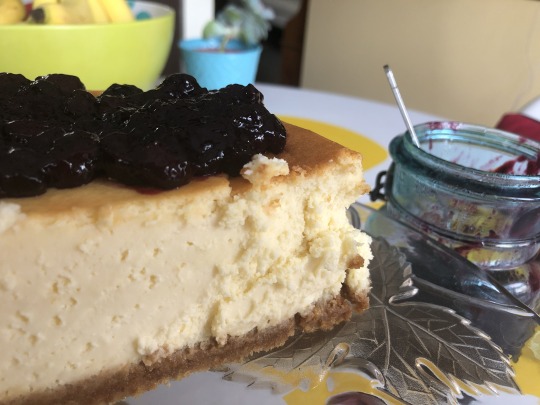
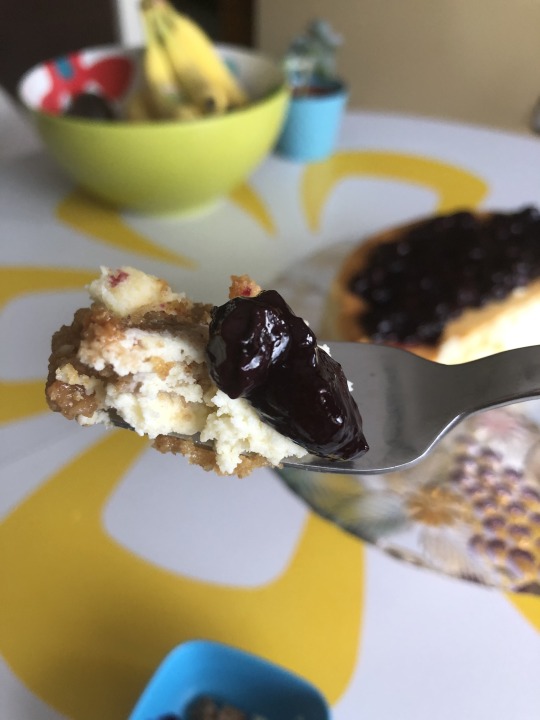
2 notes
·
View notes
Photo

Oakham is one of the London’s leading rug sellers. We are the suppliers of luxury and Large Wool Rugs in London. If you need quality rugs then you must get in touch with us. Click through to our Gallery and then either come down to our showroom to see our Persian rugs, Afghan rugs and Oriental rugs for yourself or phone or email us and we can arrange delivery.
#Rug Cleaning London#Large Wool Rugs London#Rug Cleaning Nottingham#Rug Cleaning Cambridge#Persian Rug London#Afghan Rug London#Modern Contemporary Rugs Leicester
0 notes
Link
#Large Wool Rugs Nottingham#Modern Contemporary Rugs Nottingham#Modern Contemporary Rugs London#Afghan Rug London#Persian Rug London#Rug Cleaning London
0 notes
Link

#Modern Contemporary Rugs Leicester#Rug Repairs Leicester#Large Wool Rugs Cambridge#Rug Cleaning Cambridge#Ziegler Rugs London#Afghan Rug London#Oriental Rugs London
0 notes
Photo

We have a fantastic range of Turkish Kilim Rugs, Afghan Kilim Rugs and Persian Kilim Rugs. View one of the most comprehensive collections of Turkish Rugs and Carpets, handmade traditional Kilim rugs, Kilim cushions and Kilim Furniture, with worldwide delivery. Rug Store based in London UK. Beautiful Gift Ideas at www.rugstoreonline.co.uk - Low Prices on Beautiful Gift. #antiques #designer #uk #kilim #rug #london#homedecor #decor#furniture#kilimfurniture #kilimstool (at rugstoreonline.co.uk) https://www.instagram.com/p/BqN7GRoA2xv/?utm_source=ig_tumblr_share&igshid=u05vr8n5r6v5
3 notes
·
View notes
Photo

Rugs of London Traditional Afghan Handmade Garous Zeigler Rug 7'8 x 5'5, Red Border Beige Ground, 240 x 170
0 notes
Link

Trend Carpet has a great collection of Afghan rugs in vintage and golden colors. These rugs make the best choice for those who are seeking something durable and fully loaded with character. Shop online for best quality of Afghan rugs. Go ahead and order your favorite Afghan rugs and get it delivered to your doorstep. HAPPY SHOPPING!
1 note
·
View note
Text
Wednesday, September 8, 2021
Trudeau is met with flying gravel at campaign stop
(Washington Post) Hours after Prime Minister Justin Trudeau vowed that he “won’t back down” in the face of the “anti-vaxxer mobs,” protesters—many of them opposed to coronavirus vaccinations and public health measures—threw gravel at him at a campaign stop on Monday evening. The incident occurred while Trudeau was boarding his campaign bus after an event at a brewery in London, Ontario, a city some 120 miles southwest of Toronto. Videos posted to social media of the episode show protesters throwing gravel in the direction of the prime minister and some of the reporters traveling with him. It was the latest ugly scene in a 36-day federal election campaign that has not been short of them. Vandals have defaced candidate lawn signs with antisemitic graffiti. Candidates of all political stripes have reported being targeted with sexist and racist slurs.
Ida’s aftermath
(1440) The death toll from Hurricane Ida rose to at least 60 over the holiday weekend, with more than half of the victims coming from the Northeast. At least 27 people were confirmed dead in New Jersey, 17 in New York, and five in Pennsylvania, with a number of isolated deaths reported up the Mid-Atlantic. As of this morning, 13 victims have been identified in Louisiana and two in Mississippi. Assessing the storm’s weeklong path of destruction from the Gulf to Massachusetts, analysts estimated Ida caused as much as $95B in total damage and economic loss. More than half a million customers remained without power in Louisiana, mostly in New Orleans and surrounding parishes, as of this morning. Out in the Atlantic, Hurricane Larry is expected to strengthen into a Category 4 storm, but is not currently projected to make US landfall.
Powerful earthquake near Mexico’s Acapulco kills at least 1
(AP) A powerful earthquake struck near the Pacific resort city of Acapulco on Tuesday night, killing at least one person and causing buildings to rock and sway in Mexico City hundreds of kilometers away. The U.S. Geological Survey said the quake had a preliminary magnitude of 7 and was centered 17 kilometers (about 10 miles) northeast of Acapulco. The mayor of Acapulco, Adela Román, said in statement to the television news outlet Milenio that “there is no really serious situation” so far and no reports of casualties. “There are nervous breakdowns; people are worried because there have been aftershocks,” she said, adding that there are “many gas leaks in many places” as well as some landslides and fallen walls.
El Salvador first country to make Bitcoin legal currency
(BBC) From today, businesses in El Salvador will be obliged where possible to accept the controversial blockchain-backed currency as payment as the country has just become the first to make Bitcoin a legal tender. Millions of people are expected to download the government’s new digital wallet app which gives away $30 (€25) in Bitcoin to every citizen.
Bolsonaro’s Supporters Rally
(Foreign Policy) Thousands of Brazilians took to the streets across the country today, answering—and protesting—a call by President Jair Bolsonaro for a popular show of force as corruption investigations, lagging poll numbers, and the reemergence of Luiz Inácio Lula da Silva, have weakened his position ahead of the October 2022 presidential election. A September 1 poll shows Lula trouncing Bolsonaro by double digits in a one-on-one matchup. Those election polls pair with recent polls showing more than 50 percent of Brazilians say the Bolsonaro government is bad or terrible, although those that say his administration is good or excellent has held steady at roughly 25 percent.
Venice prepares to charge tourists
(Reuters) From a control room inside the police headquarters in Venice, Big Brother is watching you. To combat tourist overcrowding, officials are tracking every person who sets foot in the lagoon city. Using 468 CCTV cameras, optical sensors and a mobile phone-tracing system, they can tell residents from visitors, Italians from foreigners, where people are coming from, where they are heading and how fast they are moving. Every 15 minutes, authorities get a snapshot of how crowded the city is—alongside how many gondolas are sliding on the Canal Grande, whether boats are speeding and if the waters rise to dangerous levels. City authorities are preparing to demand that tourists pre-book their visit on an app and charge day-trippers between 3 and 10 euros to enter, depending on the time of the year. Airport-like turnstiles are being tested to control the flow of people and, should the numbers become overwhelming, stop new visitors from getting in. Potential visitors are sceptical. “It brings the wrong tone in me when I hear that I have to pay entrance just to see the buildings in the streets of the city” said Marc Schieber, a German national in Venice for the current film festival. “I think it is probably a new way to generate money.”
Lukashenko continues crackdown on opposition
(NYT) Belarusian opposition leader Maria Kolesnikova was found guilty Monday of conspiracy to overthrow the government in Minsk and sentenced to 11 years in prison after a closed trial. Kolesnikova is one of the key opposition figures jailed in Belarus after protests ignited in August last year over presidential elections rejected by opposition activists as rigged. President Alexander Lukashenko, who has been in power since 1994, launched a violent crackdown on the protests, jailing hundreds of the regime’s opponents.
Myanmar resistance movement calls for nationwide uprising
(AP) The main underground group coordinating resistance to Myanmar’s military government called for a nationwide uprising on Tuesday. The National Unity Government views itself as a shadow government composed of elected legislators who were barred from taking their seats when the military seized power in February. The group’s acting president Duwa Lashi La called for revolt “in every village, town and city in the entire country at the same time” and declared what he called a “state of emergency.” The country has been wracked by unrest since the military ousted the elected government of Aung San Suu Kyi, with a low-level insurrection in many urban areas. There has been more serious combat in rural areas, especially in border regions where ethnic minority militias have been engaging in serious clashes with the government’s troops.
Forget Tiger Moms. Now China's 'Chicken Blood' Parents Are Pushing Kids To Succeed
(NPR) They schedule their children's days in 15-minute increments. They scour online forums and swap tips on the most exclusive tutors and best sports coaches. Some even buy second homes next to the best public schools. Forget Tiger moms. These are China's jiwa or "chicken" parents, who are known for their attentive—some say obsessive—parenting style. The term is used to describe aggressive helicopter parenting, and comes from an unproven Chinese medicine treatment dating back to the 1950s, in which someone is injected with fresh chicken blood to stimulate energy. Jiwa parenting culture, a relatively new phenomenon, is now in the crosshairs of Chinese authorities. At a time when the government wants to see families having more children and raising more future workers, it fears that hyper-competitive parenting pressures—combined with the meteoric growth of China's private education sector, now worth billions—are deepening inequality and discouraging couples from having larger families, a priority of the country's new three-child policy. As more parents complain about the burnout brought on by jiwa culture, there's concern that the financial and emotional toll is making many reluctant to have a second, much less a third, child.
Singapore trials patrol robots to deter bad social behaviour
(Reuters) Singapore has started trialing robots to patrol public areas and deter poor social behaviour in its latest effort to further augment its strong portfolio of surveillance tools. Ranked one of the safest countries in the world, Singapore has put two autonomous robots on trial to detect bad behaviour such as flouting of COVID-19 safety measures, smoking in prohibited areas and the improper parking of bicycles, Singapore’s Home Team Science and Technology Agency said in a statement on Sunday. It said the two patrol robots, named Xavier, are equipped with cameras that can detect bad social behaviour and trigger real-time alerts to the command and control centre. The agency said that during the three-week trial, the robots would be used for surveillance and displaying messages to educate the public on proper behaviour. Singapore’s home affairs minister, K Shanmugam, said in August the city-state aimed to have more than 200,000 police cameras by 2030, more than double the current number of cameras deployed.
3-year-old boy found after 3 days’ lost in Australian woods
(AP) A 3-year-old boy wearing a sweat shirt and diapers was found sitting in a creek and cupping water in his hands to drink on Monday, three days after he was lost in rugged Australian woodland. Hundreds of people had been searching for Anthony “AJ” Elfalak, who has autism and is non-verbal, since he went missing from his family’s remote rural property near the village of Putty, north of Sydney, late Friday morning. His father, Anthony Elfalak, said AJ had been bitten by ants, had diaper rash and suffered abrasions. “It’s a miracle,” the father told reporters after he and his wife, Kelly Elfalak, were reunited with their son.
US-built databases a potential tool of Taliban repression
(AP) Over two decades, the United States and its allies spent hundreds of millions of dollars building databases for the Afghan people. The nobly stated goal: Promote law and order and government accountability and modernize a war-ravaged land. But in the Taliban’s lightning seizure of power, most of that digital apparatus—including biometrics for verifying identities—apparently fell into Taliban hands. Built with few data-protection safeguards, it risks becoming the high-tech jackboots of a surveillance state. As the Taliban get their governing feet, there are worries it will be used for social control and to punish perceived foes. “It is a terrible irony,” said Frank Pasquale, Brooklyn Law School scholar of surveillance technologies. “It’s a real object lesson in ‘The road to hell is paved with good intentions.’”
The other Afghan women
(New Yorker) Anand Gopal traveled to rural Afghanistan to meet women living under Taliban rule, whose voices are not often heard in international media. “Unlike in relatively liberal Kabul, visiting women in these hinterlands is not easy” since they don’t typically speak to unrelated men, Gopal writes. Many of those he interviewed seemed to prefer Taliban rule to the US-led occupation. “To locals, life under the coalition forces and their Afghan allies was pure hazard; even drinking tea in a sunlit field, or driving to your sister’s wedding, was a potentially deadly gamble,” Gopal writes. “What the Taliban offered over their rivals was a simple bargain: Obey us, and we will not kill you.”
Israel searches for 6 Palestinians after rare prison break
(AP) Israel launched a massive manhunt in the country’s north and the occupied West Bank early Monday after six Palestinian prisoners tunneled out of their cell and escaped from a high-security facility in the biggest prison break of its kind in decades. The escape marks an embarrassing security breach just ahead of the Jewish New Year, when Israelis flock to the north to enjoy beaches, campsites and the Sea of Galilee. The prisoners appear to have gone into hiding and there was no indication Israeli authorities view them as an immediate threat. Israel’s Army Radio said 400 prisoners are being moved as a protective measure against any additional escape attempts. The radio said the prisoners escaped through a tunnel from the Gilboa prison, just north of the West Bank, which is supposed to be one of Israel’s most secure facilities.
Zuma on parole
(BBC) Former South African president Jacob Zuma has been granted medical parole for an unknown illness. Zuma has been in hospital for the past month, where he has undergone surgery and will reportedly remain there until he has been discharged. The 79-year-old is serving a 15-month sentence for contempt of court at Estcourt Correctional Centre. Zuma turned himself in to the authorities in July after being sentenced for failing to attend an inquiry into corruption during his presidency. The unprecedented jailing resulted in violent protests and looting by his loyal body of supporters. He also faces a separate corruption trial, which is due to resume on 9 September. The Democratic Alliance party criticized the parole, saying it’s “entirely unlawful and makes a mockery” of prison regulations.
0 notes
Link

#Rug Cleaning London#Large Wool Rugs Leicester#Afghan Rug London#Modern Contemporary Rugs London#Large Wool Rugs Cambridge#Rug Cleaning Leicester#Persian Rug London
0 notes
Link
The garden of archives | Art & Culture | thenews.com.pk Anyone not familiar with a man called Lieutenant TG Carless, would assume that the title of David Alesworth’s recent show, The Carless Mapping, is either a typo for careless mapping, or about cartography without using a motorcar. Instead, the exhibition (December 1-10, 2020, Canvas Gallery, Karachi) refers to Mr Carless “who painstakingly mapped Karachi harbour in 1837-38, as a commission for the East India Company”. However, without misreading the show’s title, one can still add other meanings into the works of Alesworth, a British-born artist, who painstakingly trained several generations of Pakistani artists, as the head of sculpture at the Indus Valley School of Art and Architecture, Karachi, from 1991 to 2002. “Alesworth is a sculptor, photographer and researcher of garden histories, working between Pakistan and the United Kingdom”. In the exhibition, you could see works revealing these three dimensions of his creative self. The display includes one large carpet and a number of archival prints; in which the artist demonstrated his interest in documentation. History coupled with geography provides the backbone to his art, especially in his recent works. Alesworth must have collected thousands of images of Karachi, and Pakistan while he was living here. But he is still here, even though he currently resides in Bristol. His work breathes in this environment and traces the presence and idea of outsider. The term ‘outsider’ can be interpreted ad infinitum. In a sense, everyone is a foreigner, because all of us track our origins far from the ground beneath our feet. This region was invaded, conquered, and colonised by various peoples. Between Aryans and British, the land was attacked by Arabs, Afghans, Central Asians, Portuguese and French, not always led by armies. Mercenaries, merchants, missionaries, artisans and other wanderers also sought better ventures and venues here. A newcomer needs to know the area, so a map becomes a priority – whether in mind or on the surface of stone, clay, parchment, paper, screen. A map, in its essence, is an abstraction. It is not an objective rendering of factual information, but a subjective transcription. Hence the history of maps; which is as packed with contradictions, corrections, and distortions, as the corpus of history itself. David Alesworth blends layers of history in his works; particularly in The Carless Kashan, 1838, using a carpet from Kashan that “was considered one of the most important trading places on the famous Silk Road”. Alesworth restored the old carpet, and superimposed on it a map of ‘Kurrachee’ as drawn by Lt Carless, which, the artist informs us, “was no innocent mapping of the terrain for the greater good but rather a precursor to military action”. In Alesworth’s piece, you see the idealised plan of heaven portrayed in the language of geometry and weaved in wool on the rug from Kashan, conversing with a colonial’s cartography of an alien settlement. The work, signifies a meeting point of different perceptions of tangible/desirable world. In fact, it is not only in making a map that we are engaged in preserving our observations, information and knowledge of our surroundings. Often we indulge in erasure too (since the two acts correspond). You write on the slate of history by wiping what was inscribed before. However, some texts survive as ghost images, and haunt us. Alesworth denotes merger of diverse pasts; but more on how systematic recording of geography served Imperial designs. English officers, educationists, and orientalists gathered material on India (safely stored in libraries and archives both in the UK and the subcontinent). Initiated for political and military gains, this data is now accessed for other, multiple gains. David Alesworth’s exhibition is a long and continuous note on memory and amnesia. Along with the carpet, he is showing a set of three archival textile prints on satin cotton cloth, in which rose plants (from 18th Century French botanical engravings) and their description underneath, are embroidered in black cotton, thus elimination by blocking the detail of original image. The exhibition also includes a series of prints, titled Gardening the Archive, with pictures of plants composed against pages of notebooks from archives (India Office Library for instance). In another work, species of flora are superimposed on plans of Kensington Garden, London. These works combine pictures, and botanical terms of vegetation, harking back to the primordial habit of humans ‘naming’ (started in the Garden of Eden), and controlling everything else. “And Adam gave names to all cattle, and the fowl of the air, and to every beast of the field” (Gen. 2:20), thus acquired supremacy and authority over them. Probably, the invention of writing was the first attempt in archiving. Soon, describing, inscribing and archiving became a tool of power. Human beings kept on calling what they saw, hence tamed; the way English colonials defined and subjugated what they encountered in India. According to the artist: “The Gardening the Archive series continues to weave together archival documents from Western horticultural history, many of these referencing locations that are now within Pakistan”. Plants represent the soul of a soil. Humans can migrate, disown, denounce the land of their origin, but plants cannot do this. They are rooted deep within a place. Some species existed before the great phases of history, say, Kushan Empire or Mughal Dynasty. David Alesworth as part of 2nd Pioneer Canvas Residency, 2018 at Khushab, investigated vernacular vegetation, and drew from the fossil record that “represent some of the species of plants that laid down these fossil fuel reserves up to 350 million years ago”. He used “tractor mounted blade and D85 Bulldozer… to prepare each drawing surface” which consisted of bituminous coal and limestone dust, and were approximately three hundred feet long. These immense drawings on ground, made for a brief period of time, were photographed from a ninety-foot crane; and installed as archival print in the exhibition. An intriguing aspect of these ‘drawings’ is their scale, because once made, these were not seen from a single viewing position, hence the best representation is not one’s own experience but through documentation. A drastic shift in scale changes the nature of these works; at Canvas Gallery, they give the illusion of drawings made in charcoal on a rough sheet. This, and other works from Alesworth’s show map not a physical terrain, but a mental landscape in which notions such as originality, authenticity, natural, implanted, exploited, exist side by side. David Alesworth, besides being a celebrated visual artist and respected art teacher is also known for his involvement in gardening, of a professional scale/standard. A key to recurring references of plants in his artworks; but in reality, every artist is a gardener: watering, nurturing, clipping, pruning, protecting, planting, caring, cultivating and growing ideas/images that form the private archives of a creative individual. To Alesworth: ‘The Archive’ is also a garden, one closely tended to, and the garden is always an Archive, though also in flux”. The writer is an art critic based in Lahore. https://timespakistan.com/the-garden-of-archives-art-culture-thenews-com-pk/5689/
0 notes
Photo

For Sale!! Fair practice and high quality Organic Afghan Gabbeh rug is made of 100% all natural, lanolin rich, handspun and organically dyed raw Persian highland wool with woolen warp and weft, no cotton. This rug is for the Organic concious, Eco-friendly, Persian and Traditional rug lovers , hand-knitted by the master weavers, can add luxe to any interiors, a must have. Available in all sizes.😍 . . . . . . #handknotted #bohemian #artisan #luxury #interiordesign #rug #homedecor #amazing #followforlike #europe #interior #italy #soho #decor #australia #handmade #design #london #paris #moscow #southafrica #organic #handcrafted #instafollow #newyork #germany #netherlands #instadesign #carpet #luxe https://www.instagram.com/p/BjrZTbTFXdo/?igshid=1x11pl2ej1ec0
#handknotted#bohemian#artisan#luxury#interiordesign#rug#homedecor#amazing#followforlike#europe#interior#italy#soho#decor#australia#handmade#design#london#paris#moscow#southafrica#organic#handcrafted#instafollow#newyork#germany#netherlands#instadesign#carpet#luxe
0 notes
Photo

We have a fantastic range of Turkish Kilim Rugs, Afghan Kilim Rugs and Persian Kilim Rugs. View one of the most comprehensive collections of Turkish Rugs and Carpets, handmade traditional Kilim rugs, Kilim cushions and Kilim Furniture, with worldwide delivery. Rug Store based in London UK. Beautiful Gift Ideas at www.rugstoreonline.co.uk - Low Prices on Beautiful Gift. #antiques #designer #uk #kilim #rug #london#homedecor #decor (at rugstoreonline.co.uk) https://www.instagram.com/p/Bpuw53gg4ej/?utm_source=ig_tumblr_share&igshid=dd11j5ngf4e9
1 note
·
View note
Photo
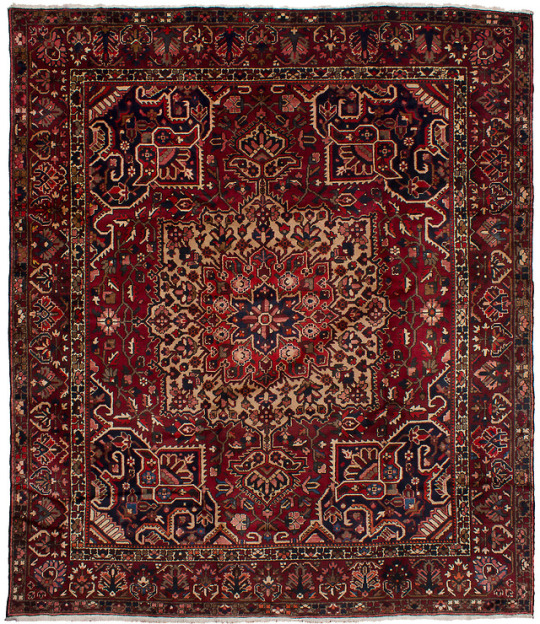
9'11 x 11'6 Hand-knotted Bakhtiar Dark Red Wool Rug
#RUG Redcarpet carpets usa usacapet persian rugs canada uk london#stilcarpet stilcarpetfactoryturkey rugcarpetwork morocco morrocan beniourainrugs beniourain morrocanrugs turkishrug handmaderug softrug ????#kilim kilimrug tappeto tappeti xali uscarpet rug vistarg iraniancarpet usacarpet indiancarpet arugs usacarpetstilcarpet stilcarpetfactory co#colorfulrugxali usacarpet tappeti tappeto rugcarpet unique exclusive exclusiverugs luxuryhomes luxurylife homeluxuryhotel hotels floor irani#iranianrugs iran turkeyflagcarpet uniquecarpet usacarpet greatbritain greatbritain???? louisemichailgallery borgospesso8 louiseMichail shop#shoppingday artbed apple USAcarpet napoli red yellow orange home comfy cozydecor homedecor sakhicarpets hali shall carpet turkmenhali usa us#usacarpet germanrugsmoscowcity Russiancarpet usacarpet ksa france francefashion frenchdecor americandesign turkishrug turkiye pakistan turkm#turkmenhali afghan indiancarpets indianrugs rugs rugsusa dhuries handknotted handknottedrugs handmaderugs handmadewoollenrugs interiordesign#moderninterior europiandesigning iraniancarpet berentinrug carpet architecture vintage vintagerug modernhouse modernrug rugsindia handweaven#artandcraft usarugs usacarpet usacarpetsandrugs interiordesign moderninterior europiandesigning iraniancarpet berentinrug carpet architectu#architecture vintage vintagerug modernhouse modernrug usacarpet unigue interiordesigninterior_and_livinginteriorhomehomedecorhomedecoration#homesweethomehometextilepillowmudoconceptbeymenhomeonlineshoppingsalekilimcarpetmoskowmadridlondonnewyork
0 notes